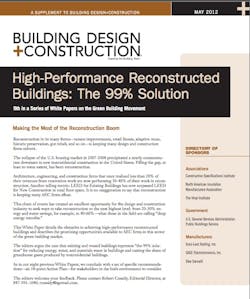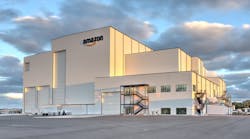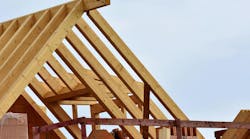Chapter 9 The Key to Commissioning That Works? It Never Stops
Click here to download a PDF of Chapter 9 The Key to Commissioning That Works? It Never Stops
Click here to download a PDF of High-Performance Reconstructed Buildings: The 99% Solution, the 9th in a Series of White Papers on the Green Building Movement
In the pursuit of high-performance reconstructed buildings, there is no guarantee that the resulting performance will persist for more than a short period of time. Why is that the case?
First, something happens between the end of a facility’s construction and the beginning of its operations. Even if the Building Team has miraculously bundled forward-thinking mechanical and electrical design, commissioning, energy modeling, measurement and verification strategies, and renewable energy production, an artificial gap exists where most (if not all) of the professionals involved in designing, installing, and verifying the initial conditions of a building’s performance are no longer involved in that building’s operations—a phase in the building’s life with far greater costs and environmental impacts.
Second, there is no “set it and forget it” button on building systems. Even if the Building Team successfully bridges a building to its operations phase, building systems are complex, interdependent, and subject to changing occupant needs, performance decay, and operator error. A comprehensive, ongoing commissioning program is the only way to preserve energy efficiency and facility performance without a primary focus on retrofits, upgrades, or replacements.
Commissioning firms and other independent organizations regularly report on the problems that typically arise when a commitment to ongoing commissioning is lacking. The problems are often easily found and usually predictable. Sensors and VAV boxes are not currently calibrated or were never properly calibrated at all. Valves and actuators are stuck in one position or other, and there’s always the occasional air-handler fan spinning backward. Surprisingly enough, missing equipment regularly makes the list of deficiencies in an existing building commissioning report.
“Recommissioning,” ”retro-commissioning” (RCx), and “ongoing commissioning” tend to be used interchangeably, but recommissioning and RCx programs are typically provided as a one-time service or event. They specifically do not address the continuing performance decay that mechanical systems inevitably experience or the seasonal adjustments that should be made to maximize performance, not to mention unexpected weather events or changes in the demands on a facility. Typical RCx programs do capture operational improvements and savings; however, over the course of a year or through the seasons, most or all of those improvements can degrade or be lost entirely.
Ongoing commissioning is a continual, systematic approach to optimizing building operations and is, in fact, the best way to combat performance decay, prioritize retrofit or capital improvement opportunities, improve comfort, reduce operating costs, and reduce greenhouse gas emissions related to energy consumption. Furthermore, ongoing commissioning can be implemented in existing commercial, industrial, and institutional buildings, which are responsible for nearly 20% of total energy use in the U.S.
COMMISSIONING FINANCES: SORTING OUT PAYBACKS, COSTS, AND CASH FLOW
The costs for ongoing building commissioning cannot be fairly discussed or considered without including the simple payback and return on investment in the equation. Numerous independent agencies and groups (without the bias exhibited by a provider of services), including the California Commissioning Collaborative, PECI, and others, promote existing building commissioning as the most cost-effective means of improving energy efficiency in commercial buildings.
The Energy Systems Laboratory of Texas A&M University has found that “in Continuous Commissioning projects undertaken in various building types across the U.S., the average annual energy bill savings opportunity is 22% (ranged from 8% to 45%).” The ESL, which licenses its branded Continuous Commissioning system to select engineering and building professional firms (our firm, SSRCx, is a licensee), further claims that Continuous Commissioning provides an average project simple payback of less than two years1 (See “Continuous Commissioning,” Energy Systems Lab, at: http://esl.tamu.edu/continuous-commissioning).
Lawrence Berkeley National Laboratory (LBNL) reports that “energy savings from a utility-sponsored retro-commissioning (building tune-up) program targeted to large commercial buildings ranged from 3% to 19%, but those savings may not persist beyond a few years.... The reasons for savings degradation include … sensor and device failures, and operator turnover.” For existing buildings, they found median commissioning costs of $.27/sf, whole-building energy savings of 15%, and payback times of 0.7 years, or less than nine months2 (See “Building Commissioning: A Golden Opportunity for Reducing Energy Costs and Greenhouse-Gas Emissions,” at: http://cx.lbl.gov/cost-benefit.html).
Note: Most service providers, including our firm, would state that costs more accurately fall within a range of $.50-.75/sf for a comprehensive ongoing existing building commissioning program, making the payback period more like one-and-a-half to two years—still very attractive.
Several variables impact the total dollars that should be budgeted for most forms of ongoing commissioning. Factors stemming from specific building types (hospitals, K-12, higher education, commercial office space) have to be taken into consideration. For example, a hospital will likely have so many different types of mechanical systems that a list of “20 typical conservation measures” and any resulting economies of scale would be meaningless; a much more granular analysis would have to be made. On the other hand, a commercial high-rise office building will more than likely have several typical floors, making it a prime environment to apply the same optimization routines to multiple pieces of HVAC equipment.
Moreover, the financial return from continuous commissioning to owners of reconstructed buildings—whether measured as “return on investment,” or “payback period,” or “internal rate of return”—is actually somewhat more favorable than is commonly believed, for two reasons.
First, as soon as the commissioning professionals begin identifying and capturing operational improvements—the incorrectly installed air-handler that’s blowing hot air into the building in the summer, the hidden pipe that’s leaking hot water, and so on—energy and water savings will start being reflected in the next utility billing cycle3 (For examples of the kinds of errors commissioning uncovers, see “Hall of shame–Visible evidence of problems addressed by commissioning,” in “Building Commissioning,” pp. 4-5, at: http://cx.lbl.gov/2009-assessment.html). Second, most commissioning firms—and this is certainly true for our firm—bill their clients incrementally over the course of the contract period, not 100% up front.
In other words, it is not the case that building owners are being asked to pay the full costs of continuous commissioning on day one of the contract, only to have to wait a couple of years to get their money back (in reduced operational costs). The more realistic picture is that savings usually start kicking in within a short period of time after the commissioning work begins, and continue to build over the period of the contract.
The reality of commissioning “payback,” therefore, is that building owners pay for commissioning incrementally over time and reap the benefits of commissioning (primarily lower utility costs) incrementally over time—all of which makes the ROI on commissioning existing and reconstructed buildings even more favorable than is commonly believed.
IF COMMISSIONING IS SO GOOD, WHY ISN’T EVERY BUILDING OWNER DOING IT?
With few exceptions facility directors will tell you that their properties could benefit from ongoing building commissioning. A common problem, however, is that they do not budget for such a service until a service provider promotes the idea, the advantages, the benefits, and paybacks, which can mean a delay in executing a plan by as much as a year. Another LBNL report stated, “Some view commissioning as a luxury and ‘added’ cost, yet it is only a barometer of the cost of errors promulgated by other parties involved in the design, construction, or operation of buildings. Commissioning agents are just the ‘messengers’; they are only revealing and identifying the means to address pre-existing problems.”
With O&M budgets stretched to their limits and facilities teams often grossly understaffed, the most important message when it comes to commissioning is the need for persistence in any building, above and beyond typical preventive maintenance programs and design and construction best practices. Building systems—mechanical, electrical, plumbing, structural, thermal, and so on—degrade over time, even in the case of recently reconstructed or renovated buildings. Components break or wear out; sequences of operation are “temporarily” changed and never restored; sensors lack regular calibration or do not work at all—all of which cost far more than most building owners realize.
A program of persistent and ongoing commissioning is, from our experience, the best way to address the inherent performance decay in buildings and properly prioritize other operational and energy-related enhancement programs. If we can take this one additional step in the typical standard of care applied to operational programs, commercial, institutional, and industrial building owners will save a tremendous amount of energy, greenhouse gas emissions, and money. +
--
James Qualk is Vice President of SSRCx and team leader for the Sustainable Solutions Group. SSRCx is a division of Smith Seckman Reid engineering design and facility consulting firm. He lectures on sustainability and construction in the Civil Engineering Department of Vanderbilt University and at Lipscomb University in the Institute for Sustainable Practice. He was recently named a member of Building Design+Construction’s “40 UNDER 40” Class of 2012. Follow him on Twitter @Jamie Qualk.
Steven Harrell is Manager of Continuous Commissioning for SSRCx, a division of Smith Seckman Reid engineering design and facility consulting firm. He is a frequent speaker at conferences regarding energy use and efficiency in existing buildings.


